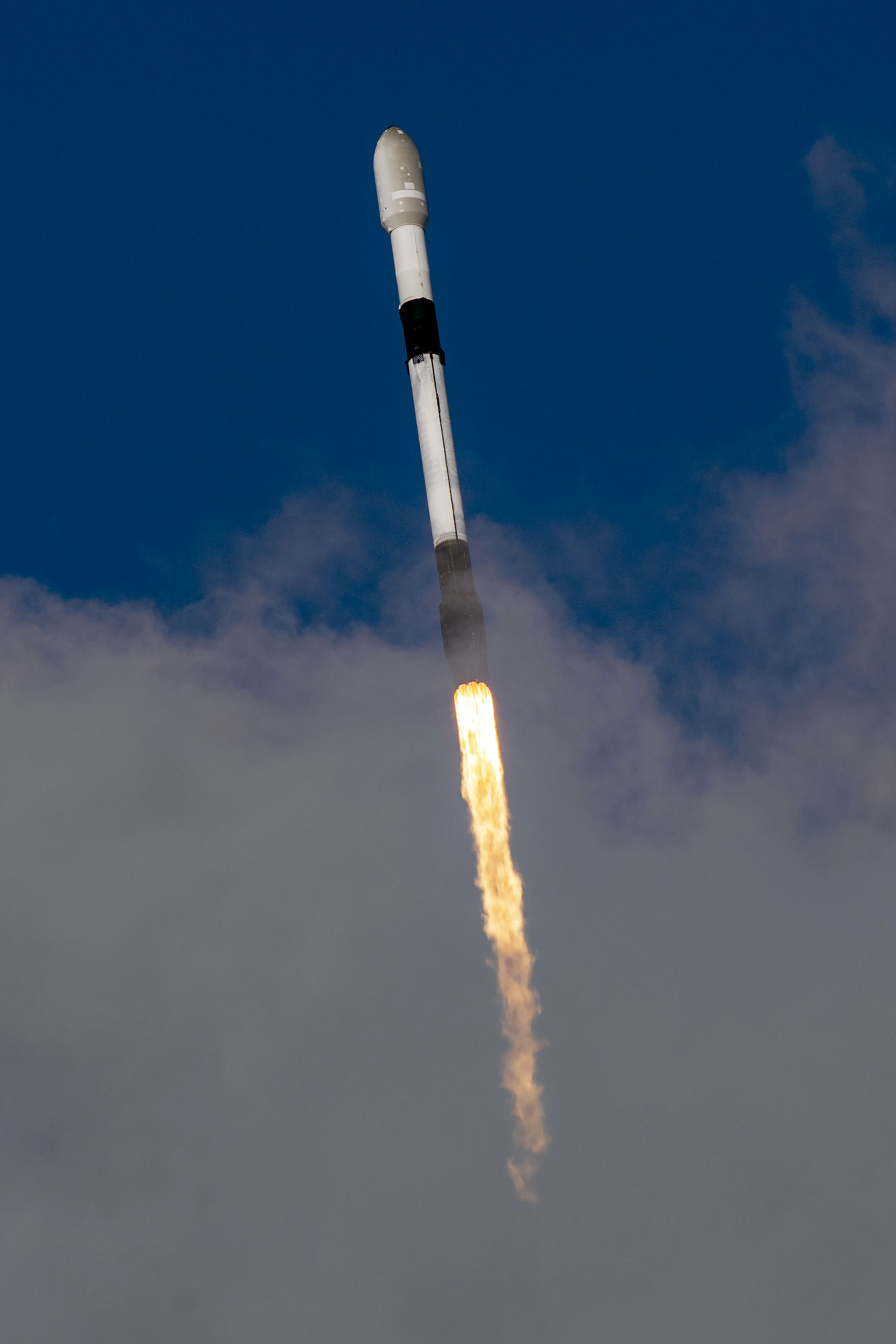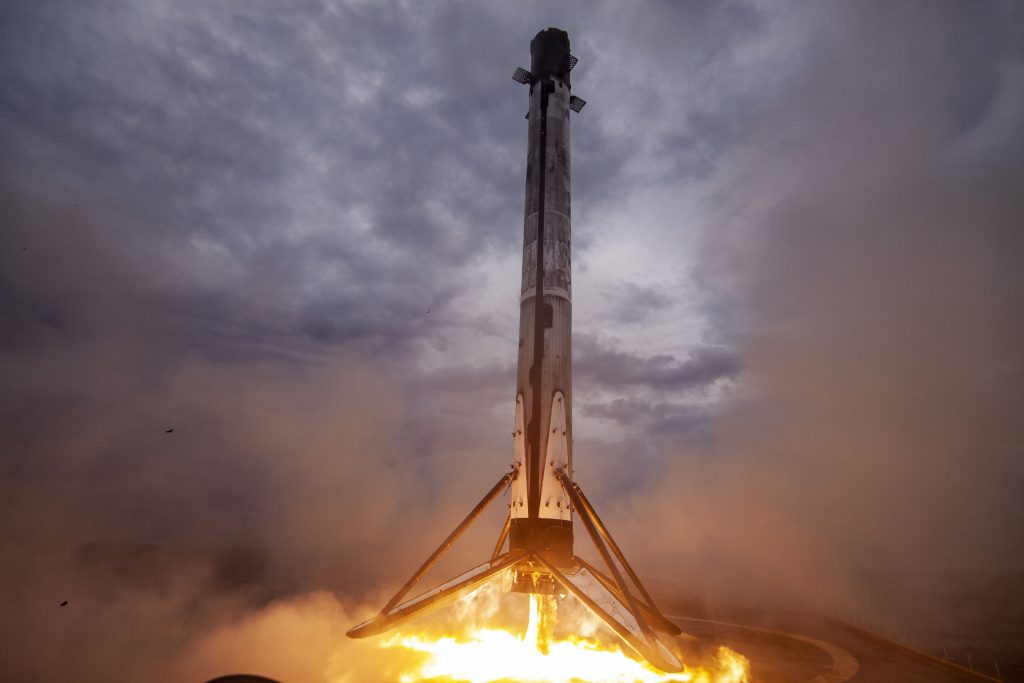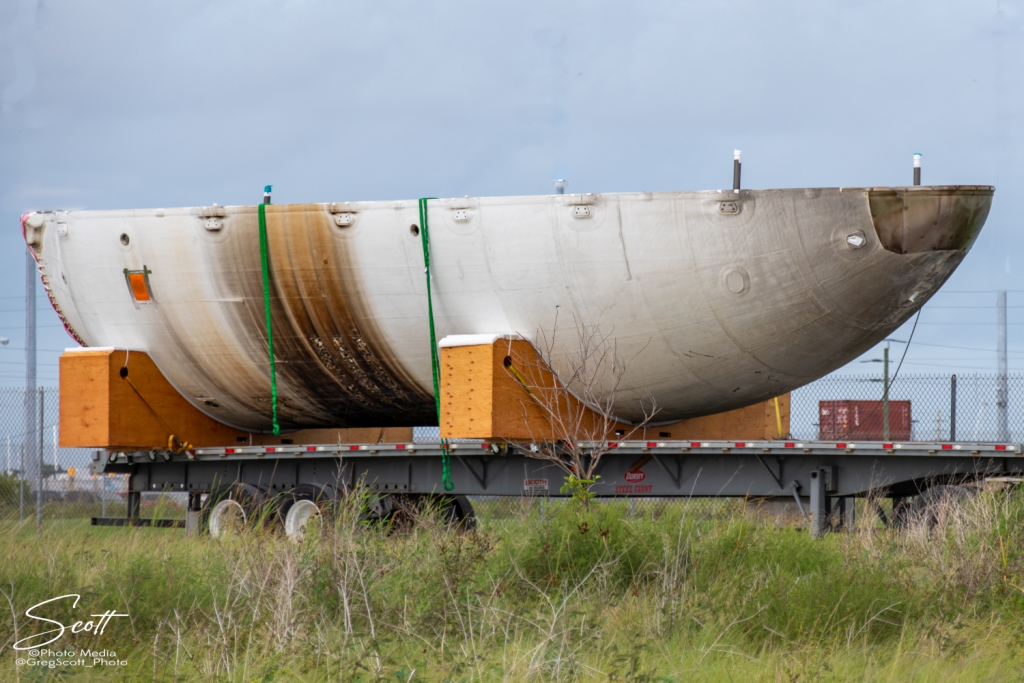Lift Off Time | June 19, 2022 – 04:27 UTC | 00:27 EDT |
|---|---|
Mission Name | Globalstar-2 FM-15 |
Launch Provider | SpaceX |
Customer | Globalstar |
Rocket | Falcon 9 Block 5, B1061-9 (24 day turnaround) |
Launch Location | SLC-40, Cape Canaveral Space Force Station, Florida, USA |
Payload mass | At least 700 kg (1500 lb) |
Where did the satellites go? | Unknown orbit |
Did they attempt to recover the first stage? | Yes |
Where did the first stage land? | Just Read The Instructions (JRTI) approx 650 km (404 mi) downrange |
Did they attempt to recover the fairings? | Yes |
Were these fairings new? | No |
This was the: | – 160th Falcon 9 launch – 126th booster landing – 52nd consecutive landing (a record) – 26th launch for SpaceX in 2022 – 3rd launch in under 48 hours for SpaceX – 68th orbital launch attempt of 2022 (66th successful) |
Where to watch | Official replay |
How Did It Go?
Space Exploration Technologies (SpaceX) successfully launched the next Globalstar satellite in the constellation. The Falcon 9 Block 5 took flight from Space Launch Complex (SLC) 40 at Cape Canaveral Space Force Station. There was only one known satellite (Globalstar-2 FM-15) on this mission, but more unknown payloads including a satellite for the United States government might have been on board. The booster successfully landed on Just Read The Instructions in the Atlantic Ocean.
What Is A Globalstar-2 Satellite?
Over the past two decades, numerous Globalstar satellites with variations in their design have been launched, primarily by Soyuz 2.1a rockets with the Fregat upper stage. Almost all previous Globalstar satellites have been placed in a circular 1410 km (876 mi) orbit at a 52 degree inclination. Globalstar satellites have an estimated lifetime of 15 years.
Two major versions of the Globalstar satellite have been launched. The original Globalsar satellites were launched between 1998 and 2007. Three years later the second series, Globalstar-2, began their launches. The common designation for a given satellite is Globalstar XX. For this mission, SpaceX will launch the Globalstar 87 satellite.
Traditionally, these satellites have launched in groups of six. However, due to the indication of the potentiality of multiple payloads, including for the US government, it appears that there is only one Globalstar satellite onboard.

What Does The Globalstar Satellite Do?
The constellation of Globalstar satellites aims to provide digital real time voice, data, and fax transmissions from anywhere in the world. Each satellite weighs about 700 kg (1500 lb) and is equipped with 16 transponders from C to S-band. They also have 16 receivers from L to C-band. On each side are two deployable solar arrays which supply the satellite with 2.4 kW of its required power.

How Are The Globalstar Satellites Made?
Each satellite is built by Alcatel Alenia Space in one of their four production facilities in France, Italy, Spain, and Belgium. They use the ELiTeBus-1000 which has power and propulsion capabilities. These propulsion capabilities enable the satellite to raise itself into its final orbit. Initially, each satellite is placed into a phasing orbit of 920 km (570 mi) at 52 degrees of inclination.
What Is Falcon 9 Block 5?
The Falcon 9 Block 5 is SpaceX’s partially reusable two-stage medium-lift launch vehicle. The vehicle consists of a reusable first stage, an expendable second stage, and, when in payload configuration, a pair of reusable fairing halves.
First Stage
The Falcon 9 first stage contains 9 Merlin 1D+ sea level engines. Each engine uses an open gas generator cycle and runs on RP-1 and liquid oxygen (LOx). Each engine produces 845 kN of thrust at sea level, with a specific impulse (ISP) of 285 seconds, and 934 kN in a vacuum with an ISP of 313 seconds. Due to the powerful nature of the engine, and the large amount of them, the Falcon 9 first stage is able to lose an engine right off the pad, or up to two later in flight, and be able to successfully place the payload into orbit.
The Merlin engines are ignited by triethylaluminum and triethylborane (TEA-TEB), which instantaneously burst into flames when mixed in the presence of oxygen. During static fire and launch the TEA-TEB is provided by the ground service equipment. However, as the Falcon 9 first stage is able to propulsively land, three of the Merlin engines (E1, E5, and E9) contain TEA-TEB canisters to relight for the boost back, reentry, and landing burns.
Second Stage
The Falcon 9 second stage is the only expendable part of the Falcon 9. It contains a singular MVacD engine that produces 992 kN of thrust and an ISP of 348 seconds. The second stage is capable of doing several burns, allowing the Falcon 9 to put payloads in several different orbits.
For missions with many burns and/or long coasts between burns, the second stage is able to be equipped with a mission extension package. When the second stage has this package it has a grey strip, which helps keep the RP-1 warm, an increased number of composite-overwrapped pressure vessels (COPVs) for pressurization control, and additional TEA-TEB.

Falcon 9 Booster
The booster that supported the Globalstar-2 FM-15 mission is B1061. This was the boosters ninth successful flight changing is designation from B1061-9 to B1061-10.
| B1061’s missions | Launch Date (UTC) | Turn Around Time (Days) |
| Crew-1 | November 16, 2020 00:27 | N/A |
| Crew-2 | April 23, 2021 09:49 | 158.39 |
| SXM-8 | June 06, 2021 04:26 | 43.78 |
| CRS-23 | August 29, 2021 07:14 | 84.12 |
| IXPE | December 09, 2021 06:00 | 101.95 |
| Starlink Group 4-7 | February 03, 2022 18:13 | 56.51 |
| Transporter-4 | April 01, 2022 16:24 | 56.92 |
| Transporter-5 | May 25, 2022 18:35 | 54.09 |
| Globalstar-2 FM15 | June 19, 2022 04:27 | 24.41 |
Following stage separation, the Falcon 9 successfully conducted two burns. These burns softly landed the booster on SpaceX’s autonomous spaceport drone ship, Just Read The Instructions (JRTI).

Falcon 9 Fairings
The Falcon 9’s fairing consists of two dissimilar reusable halves. The first half (the half that faces away from the transport erector) is called the active half, and houses the pneumatics for the separation system. The other fairing half is called the passive half. As the name implies, this half plays a purely passive role in the fairing separation process, as it relies on the pneumatics from the active half.
Both fairing halves are equipped with cold gas thrusters and a parafoil which are used to softly touch down the fairing half in the ocean. SpaceX used to attempt to catch the fairing halves, however, at the end of 2020 this program was canceled due to safety risks and a low success rate. On Globalstar-2 FM15, SpaceX will attempt to recover the fairing halves from the water with their recovery vessel Bob.
In 2021, SpaceX started flying a new version of the Falcon 9 fairing. The new “upgraded” version has vents only at the top of each fairing half, by the gap between the halves, whereas the old version had vents placed spread equidistantly around the base of the fairing. Moving the vents decreases the chance of water getting into the fairing, making the chance of a successful scoop significantly higher.






